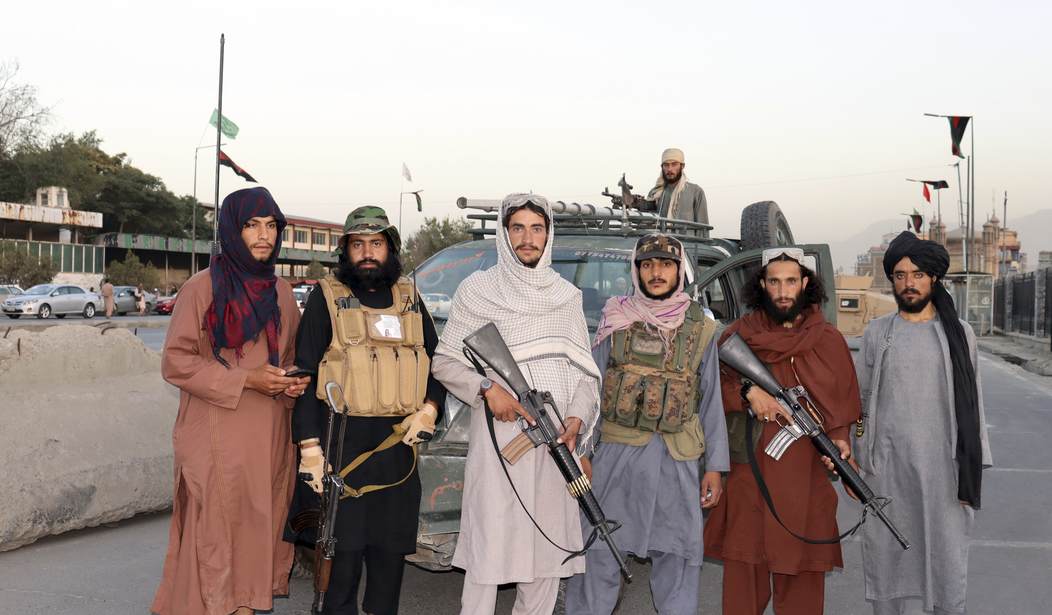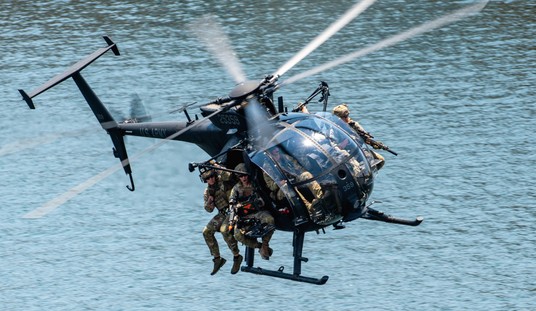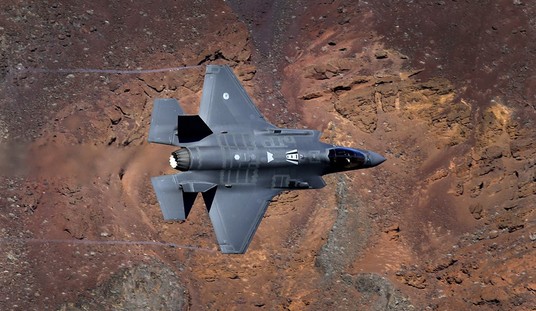As Taliban fighters parade their newfound weapons cache — and possible newfound legitimacy thanks to the Biden administration — on Afghanistan television and through the streets of villages and cities in the region, what happened to the U.S.-backed Afghan government and U.S.-trained Afghan Security Forces is becoming clearer: they’re in the Panjshir Valley and they appear to want to fight, despite being abandoned by their U.S. partners of 20 years.
An Iranian journalist posted videos of the Taliban’s victory lap after retrieving what the BBC records as 73 aircraft and nearly 100 vehicles and other equipment.
This is not ISIS, this is Taliban on National TV of Afghanistan. pic.twitter.com/663rhtzUNw
— Tajuden Soroush (@TajudenSoroush) September 2, 2021
That’s a more emboldened Taliban than most Americans ever thought they might see. But there’s a very good reason for it: the Biden administration is making fairly loud overtures about working with them to fend off the mysterious ISIS-K (which is, by some accounts, simply a Taliban splinter group).
Secretary Cohen: "… So it may be ironic that the very people who have been fighting us will need us in order to stay safe and in power themselves." (2/2) #AMRstaff
— Andrea Mitchell (@mitchellreports) September 1, 2021
This is all very odd, consider the U.S. spent the last 20 years training and equipping the Afghan government to battle terrorists in the region, including the Taliban.
Washington spent more than $80 billion over 20 years on the Afghan military and police, U.S. government auditors have said, a portion of it in armaments. U.S. officials have said they have no reliable accounting of Taliban weapons seizures.
“We are not concerned with the loss of any significant technological or sensitive capability,” Eric Pahon, a Pentagon spokesman, said. “While seizing this equipment may be beneficial to the Taliban, it does not represent a threat to the U.S., allies or partners.”
Numerous images have emerged of Taliban fighters dressed helmet to boots in U.S. Special Forces gear, holding U.S.-made assault and sniper rifles.
…
“The ability for those birds to continue to fly in the long term is going to be very challenging,” said John Venable, a former Air Force officer who led combat flights in Afghanistan, now at the Heritage Foundation think tank. “It’s spare-parts reliant, and that flow was cut off.”
Some analysts nonetheless emphasize that nations friendly to the Taliban could assist the group in helping extend the use of planes and helicopters by supplying parts, maintenance or pilots.
Some U.S.-trained Afghan air force pilots remain in the country, prompting concern that these airmen are at the controls of the recent helicopter flights, possibly under duress.
“You’re watching the worst kind of coercion take place right now,” Mr. Venable said. “If you take a gun and hold it to one of their family members, it’s, ‘Yeah, I’m going to fly that helicopter for you.’ ”
The U.S. was ready to leave Afghanistan, no doubt; and the blunder of how the drawdown was carried out has been covered ad nauseum over the last several days, so I won’t rehash any of that here.
But the question about why the U.S. would leave and abandon equipment to the Taliban — albeit in various stages of functionality — is a rather confusing one. The Afghan government would have known during Trump’s term that they would likely be engaged in a battle with the Taliban when the U.S. left, and were preparing. But why the Biden administration chose to leave military equipment behind for the Taliban to just stumble across — and to legitimatize them as the new governing force in the country almost immediately — is a mystery.
Unless it’s purely about politics rather than war and brutality. Then it starts to make sense. And if that’s the case, it should be noted that the Biden administration has apparently chosen the side of a brutal fundamentalist regime — over the U.S.’s partner for the last 20 years– in what looks to be a coming civil war. Perhaps that’s why they’ve been busy scrubbing federal websites of exactly what was left behind.













Join the conversation as a VIP Member